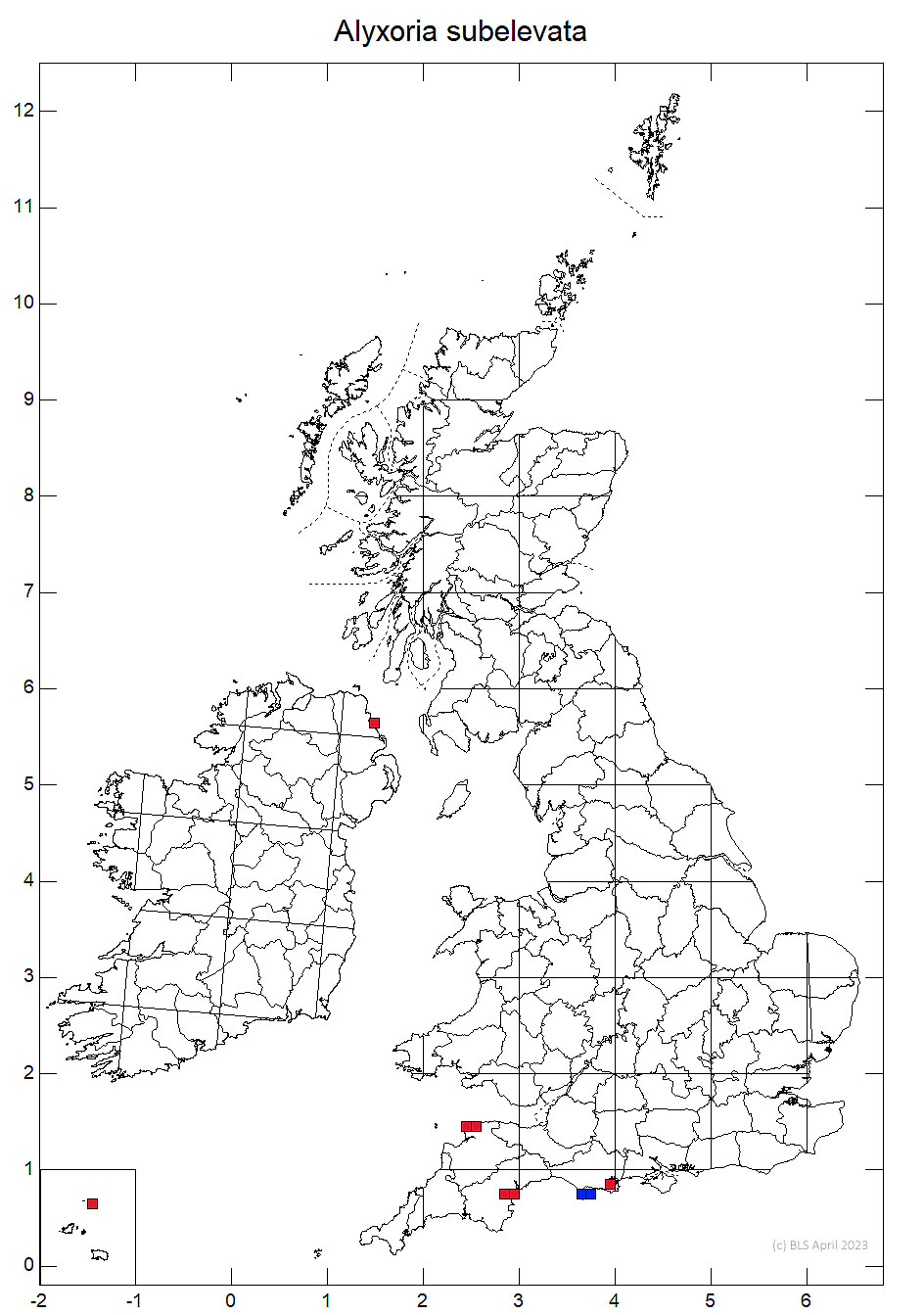Thallus thin or rather thick or immersed, smooth to finely rimose-cracked and ± granular, ash- to yellow-grey. Apothecia 0.5–1.5 (–2.5) × 0.12–0.3 (–0.4) mm, scattered or crowded and contiguous, elongate, sessile, elevated, occasionally furcate, ends often acute; disc usually well exposed, densely bluish mauve-grey pruinose; exciple thin, even, non-pruinose, K–; epithecium brown; hymenium 80–90 (–100) μm tall. Ascospores (16–) 20–23 (–27) × (5–) 6–7 (–8) μm, 3-septate, ± elongate-clavate, sometimes becoming brownish when old. Conidia 4–6 × 0.7–1 μm, bacilliform or slightly curved. Thallus C–, K–, KC–, Pd–, UV– (no lichen products detected by TLC).
The prominent apothecia with ± open, grey-blue pruinose discs with black, naked margins are distinctive. Distinguished from Opegrapha demutata by the larger apothecia, shorter conidia and larger ascospores.
On steep limestone, mortared walls, ± basic sandstone or slate rocks.

Very rare. S. & S.W. England (N. Devon, Dorset), Channel Islands (Alderney).
Lorem ipsum dolor sit amet
England: Endangered, Section 41 species
Cannon, P., Coppins, B., Ertz, D., Pentecost, A., Sanderson, N., Simkin, J. & Wolseley, P. (2021). Arthoniales: Lecanographaceae, including the genera Alyxoria, Lecanographa, Phacographa, Plectocarpon and Zwackhia. Revisions of British and Irish Lichens 14: 1-15.
